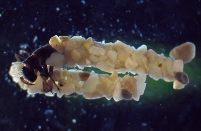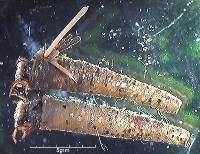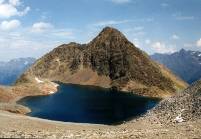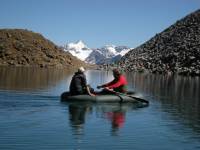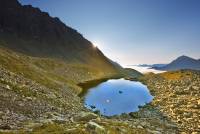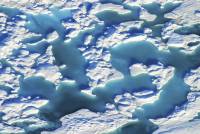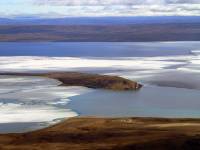OTHER PROJECTS
Onging project related to metal biomonitoring in Austrian rivers
Caddisfly lavae as bioindicators of metal pollution in aquatic systems
Monitoring of water and sediments by metal analysis is not sufficient because of fluctuating metal concentrations in the water and delayed responses of sediments. It also provides little information about metal bioavailability in aquatic ecosystems. Therefore, aquatic organisms (e.g. aquatic insects) are commonly used for biomonitoring the actual metal load of aquatic biota.
Caddisfly larvae satisfy some important critera established for bioindicators, thus being valuable biomonitoring organisms of metal contamination in freshwater ecosystems:
- high abundance: In many waters caddisfly larvae often occur in large quantities, even at contaminated sites
- easy to collect: Caddisfly larvae can be collected by simple, inexpensive methods.
- low mobility: Caddisfly larvae are benthic animals. Being continously exposed to contaminants, they represent the local conditions of pollution.
- high sensitivity: Caddisfly larvae reflect metal contamination at pollution levels hardly detectable by analysis of sediment samples.
Furthermore, an Austrian-Canadian cooperation between our working group and the Canadian Forest Service (Great Lakes Forestry Centre, Sault Ste. Marie, Ontario, Canada) has been established in 2000. This collaborative project was aimed to study the effects of forest management activities on the metal remobilization in the Turkey Lakes Watershed by using aquatic insect larvae as a sensitive biomonitoring tool.
Project partners: Leopold Füreder (University of Innsbruck), Claudia Köck
Past projects related to arctic and alpine research
Investigation of mercury toxicity in landlocked char in High Arctic lakes
Objectives of this project funded by Northern Contaminants Program are
- Study the toxic effects of Hg in landlocked char in „NCP focal ecosystem“ High Arctic lakes on Cornwallis Island
- Estimate a treshold concentration of Hg associated with toxic effects in landlocked char
- Provide this information to the Hamlet of Resolute Bay (Qausuittuq) and to the Niqiit Avatittinni Committee (Nunavut) on a timely basis.
Project partners: Paul Drevnick (project leader; University of Michigan, now Alberta Environment and Parks), Benjamin Barst (Université de Montréal, now University of Alaska Fairbanks), Gretchen Lescord (University of New Brunswick), Karista Hudelson (INRS-ETE Université du Québec, now University of Windsor), Derek Muir (Environment Canada), Karen Kidd (University of New Brunswick), Peter Campbell and Claude Fortin (INRS-ETE, Université de Québec), Debbie Iqaluk (Resolute Bay)
Impact of melting permafrost and rock glaciers on water qualitiy and aquatic organisms in alpine lakes
Recent warming has strongly affected the melting of permafrost in high alpine regions. The melt water of permafrost and rock glaciers caused unexpected changes in aquatic ecosystems, ranging from rapid increases in conductivity to toxic levels in metal concentrations that can exceed drinking water standards by more than an order of magnitude. The processes controlling the meltwater composition, and especially metal concentrations, are not yet understood. It is, however, well known that high metal concentrations affect aquatic organisms, often causing deformations and changes in species composition.
The project team investigates aquatic organisms of different trophic levels, ranging from algae (diatoms) to worms (oligochaetes), insects (chironomids, trichoptera) and fish (char and minnows), in three lakes with permafrost in the catchment. Furthermore, we will obtain short sediment cores in order to capture the historic trends of metal increase and resulting changes in species composition and toxic effects. These sediment analyses will be compared with temperature records spanning the past 220 years and with trends of atmospheric deposition based on measurements, and data from peat bogs and ice cores.
Major research questions: To what extent does melting permafrost affect water quality and aquatic organisms in alpine lakes? Do metals, especially nickel, released from permafrost accumulate in the food web and, if so, with what consequence? Is the current release of melt water from permafrost unprecedented, or do we see comparable and repeated increases in metal concentrations during warmer periods in the past? With ongoing warming, which hazards are to be expected for downstream ecosystems and drinking water supply when compared to the historic trend?
Project partners: Karin Koinig (project leader), Elena Ilyashuk, Reinhard Lackner, Roland Psenner (all University of Innsbruck)
Assessment of the biological integrity of large lakes
The aim of this project coordinated by the Institute of Limnology of the Austrian Academy of Science (Mondsee) was the investigation of the effects of metal-contaminated industrial effluents on the ecosystem of a large lake (Traunsee) in Upper Austria. The team members from the Institute of Zoology and Limnology contributed to the project by investigating metal contamination in fish, mussels and benthic invertebrates and various biochemical indicators of stress in the fish.
Project partners: Roland Schmid (project leader), Josef Wanzenböck, Martin Dokulil (all Institute of Limnology of the Austrian Academy of Sciences), Roland Psenner, Christine Doblander (all University of Innsbruck)
